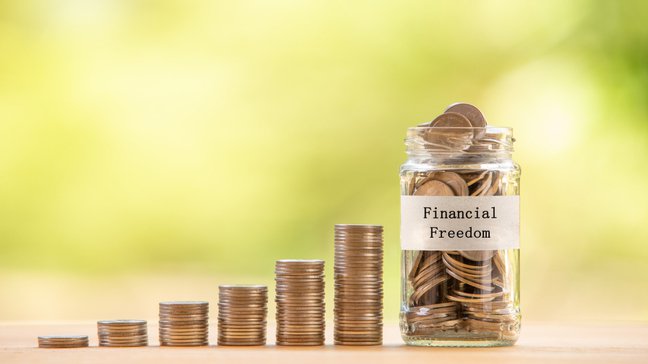Over the past decade, the popularity of alternative investments has skyrocketed. And don’t slow them down. Assets dedicated to alternatives are expected to reach trillions of dollars by 2023. For those unfamiliar, alternative investments are investments that go beyond things like public stocks, index funds, bonds, and cash. Since 2008, low interest rates have encouraged investors to look for such alternatives to boost returns, diversify portfolios, hedge against market fluctuations, generate income, and fight inflation. The most common types of alternatives have traditionally been private equity, private real estate, private loans, private infrastructure, venture capital, and hedge funds. But these days, the alternatives extend to collectibles, farmland, royalties from music, art, wine, classic cars, and cryptocurrencies. But given their unique complexity and high minimum entry thresholds, alternative investments have tended to be reserved for sophisticated investors such as pension funds and the wealthy. The good news is that new technologies and updated regulations have seen a wave of fintech companies enter the market to democratize access. If you’re looking to expand your portfolio and explore additional passive income streams to help you achieve that elusive FIRE (financial independence, early retirement), there has never been a more exciting time to explore this space.
Know the risks before investing
While investing in alternatives can be profitable, it comes with a number of unique risks.
Pricing/Transparency in Asset Valuation
Because alternative investments are generally not traded on public exchanges, such as stocks and index funds, they may carry significant pricing/valuation transparency risk. This is because most of the assets that fall under the category of alternative investments tend to be valued less often, which requires the expertise of specialized valuators. This is very different from the daily price determination you get in the stock market.
Liquidity
If you want to sell one of your shares today, all you have to do is click a button on your brokerage account and you will sell that share at the price displayed on your screen at the time of the sale. This is called “liquidity”. Alternative investments are generally not considered liquid because they cannot be bought and sold quickly. This leads to increased risk if you need to withdraw money quickly. If you are investing in this space, make sure you can stick with it long term. Read more: Reserve funds: everything you need to know
High fees and costs
According to the Boston Consulting Group, in 2019, income from alternative investment products accounted for 46% of all investment management industry income, despite the fact that they only make up 16% of all industry assets. Alternatives tend to be much more expensive than traditional investments due to higher management fees and performance rewards that are paid to managers to incentivize performance.
Survivor bias
Finally, it can be difficult to judge the exact long-term performance of some types of alternatives due to “survival bias”. This is when too much weight in the performance of an investment type is attributed to the big winners and the losers are left out. Investments that suffer from a survival bias can give investors a false impression of how good this type of investment really is. The mutual fund and hedge fund industry suffers greatly from this bias.
3 Alternative Investment Options for Passive Income
If you’ve done your homework and are comfortable with the risks, here are some interesting areas to explore:
The property
Real estate is a well-known and widespread means of accumulating wealth. According to Knight Frank’s 2021 Wealth Report, real estate makes up about 20% of the portfolios of ultra-wealthy individuals in the US. Since investing in real estate comes with significant upfront costs and ongoing responsibilities, many have emerged to help people capitalize on real estate while staying on the sidelines. Fundraising, Yieldstreet and Groundfloor offer different types of private real estate investments available to ordinary investors. Using one of these platforms allows you to access income generating real estate or high interest real estate backed loans. Because each platform is different, make sure you compare their respective offerings. You can also access income-producing real estate assets through publicly traded real estate investment trusts (REITs), but beware, these will be subject to the daily ups and downs of the market. Read more: Investing in REITs: Everything you need to know
Music royalties
When an artist records a song, a copyright is created that generates revenue every time it is played. With music industry revenues surpassing $40 billion in 2021, investors are looking to music royalties to generate predictable income that is unaffected by the economy. Investing in music royalties first gained notoriety in 1997 when David Bowie used the income stream from his royalties to raise $55 million at a 7.9% annual return. Called “Bowie bonds”, they attracted investors with passive income from Bowie’s music. These assets are seen as an addition to certain types of bonds or, in industry parlance, “asset-backed securities”. Major investment firms such as BlackRock, Blackstone and KKR have recently formed partnerships to invest in music royalties. Many prolific musicians such as Bob Dylan, Neil Young, Fleetwood Mac and others are starting to sell their catalogs. Other players in this market are the Hipgnosis Songs Fund and Round Hill Music Royalty, which similarly buy music royalties and distribute the proceeds to shareholders as dividends. If you’re as interested in this space as I am, check out platforms like Royalty Exchange or Songvest, which allow you to either directly buy music copyrighted intellectual property or fractional shares of royalties. You can also check out the public shares of Hipgnosis or Round Hill, which are traded on the London Stock Exchange. But be aware that since there are many types of music royalties that vary widely in value, this is not the place to go if you don’t want to do your research.
farmland
Agricultural land is one of the most important resources, yet many seem to forget about it. Because of its importance and scarcity, farmland has been one of the most profitable investments, outperforming U.S. stocks from 1992 to 2020. And with rising demand and shrinking supply, it’s reasonable to expect farmland to continue to perform well. Unfortunately, most farmland investment opportunities are still reserved for accredited investors, including crowdfunding platforms such as Acretrader and Farm Together. But some options do not require you to be an accredited investor. Examples include the Steward agricultural lending platform and some offerings from Harvest Returns. You can also look into farmland real estate investment trusts (REITs) such as Gladstone Land Corporation and Farmland Partners. However, like other REITs, they will be subject to daily price fluctuations.
essence
If you’re just starting out on your own FIRE journey (or already on your way), the stock market has probably been your primary investment platform. But if you’re looking for alternative investments to support that passive income (and you know your risk tolerance), then non-traditional options like real estate, music royalties, and farmland are worth considering. Featured Image: KT Stock photos/Shutterstock.com


